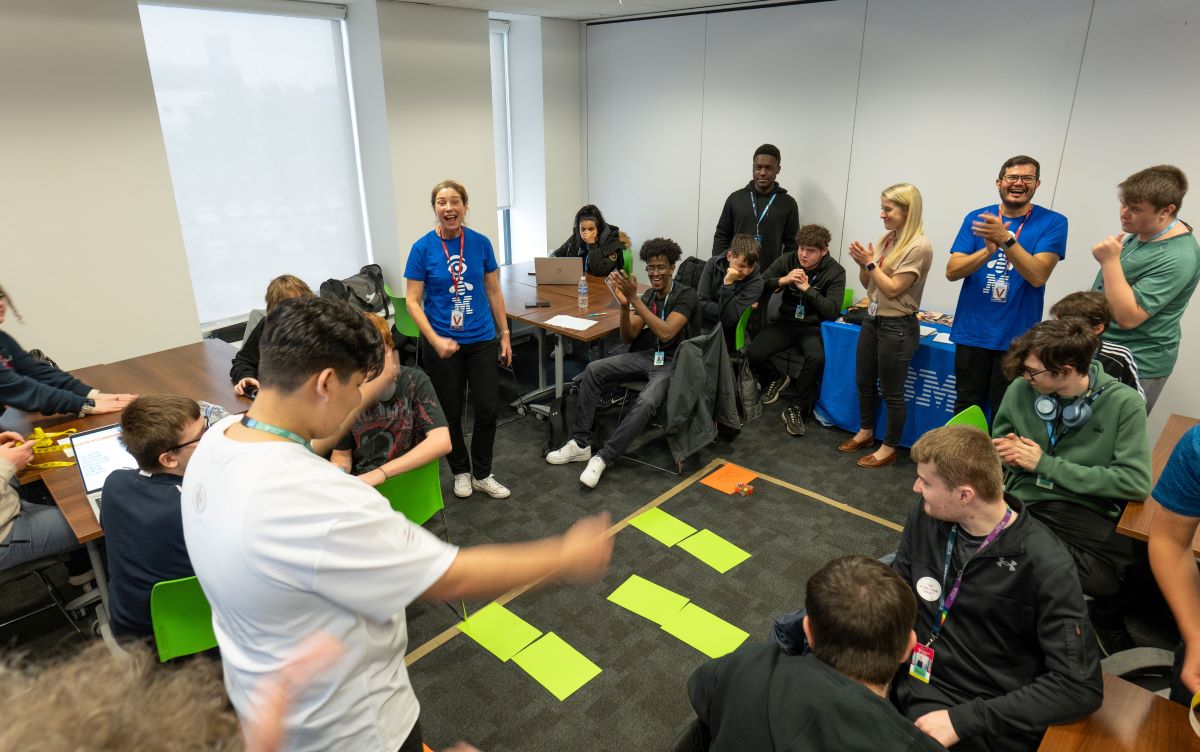Edtech as a classroom ally: Supporting students and teachers with active and collaborative learning

In this article, Jonathon discusses the importance of Edtech and the benefits it brings to both pupils and teachers.
The adoption of technology in the classroom has been rapid in the last decade. We have witnessed new digital tools and the ways that they support teaching practices transform traditional learning experiences and build more meaningful connections with students. Not only has learning become more active and integrated, but also more flexible. Students can now learn from anywhere and benefit from greater exploration, understanding and collaboration aided by tech tools.
And the results speak for themselves. EdTech is vital for boosting student engagement and learning outcomes; particularly when the technologies’ core principles are grounded in supporting active learning. In fact, SMART’s EdTech Assessment Tool research found that with increased adoption of classroom technology which integrates active learning, schools across the UK are reporting better outcomes for their students and teachers.
What is active learning?
Active learning is exactly what its name implies. It is an approach that helps learners store new information into long-term memory and develop a conceptual understanding of the material. It takes teaching beyond ‘sit and get’ to enable learning that engages students and makes learning ‘stickier’. Research has identified several benefits of active learning for students: it improves critical thinking, increases retention of new information, improves transfer of new information and promotes higher-order thinking skills.
Now, teachers are not only recognising active learning pedagogies, but aiming to incorporate them in all lesson planning and activities, with the support of digital infrastructure.
As a result, EdTech solutions which directly support active learning are increasingly embraced by schools. In fact, the UK has become a world-leader in EdTech adoption in recent years, with the demand exceeding the DfE’s projection, as the UK EdTech sector grew 72% by November 2020, bringing its value to almost £3.5bn. Moreover, according to research collected from SMART’s EdTech Assessment Tool, 64% of UK schools are now embedding technology in everyday teaching and learning practices.
How can EdTech support active learning and create outstanding learning experiences?
Investment in edtech has skyrocketed over the last three years, as the nature of the pandemic forced school leaders to reevaluate the ways students learn and find creative solutions to provide active learning amid subsequent lockdown and hybrid learning periods.
Entire school communities were opened up to the benefits of edtech in the classroom from promoting active learning experiences, to providing flexibility and engagement in different learning environments, as well as the potential to personalise learning. And three years on, the integration of edtech inside, and outside of the classroom, remains. Here’s why:
Boosting classroom engagements
EdTech has transformed the way we teach, and the way we learn, and it goes far beyond substituting whiteboards for digital screens.
Igniting student’s interest with game-based learning has been a game-changer in supporting active learning and boosting engagement in the classroom. Students are not just participating with their learning, but instead, given an active role. With game-based activities, students feel excited by their learning, gain confidence and better understanding in their subject matter, all while channelling their creativity and testing knowledge in a fun and engaging way.
Tracking student performance
And these interactive activities and games are not just beneficial for students. Teachers can gain hugely valuable insights around student’s understanding and knowledge level based on their performance in activities and assessments in real-time. Having instant feedback and being able to monitor students’ progress in an immediate and measurable way, makes learning data-driven but also more personalised, allowing teachers to better tailor their teaching plans according to each student.
Development of critical skills
Along with boosting classroom engagement and understanding of subject knowledge, EdTech is a huge support in developing critical skills like teamwork, collaboration and digital fluency – all core skills that will prepare them for a future and present where tech skills, adaptability, and collaboration are vital for success.
Supporting with teacher burnout
For teachers, with huge responsibilities to juggle including heavy workloads, exam preparation, lesson planning, deadlines, student wellbeing and behavioural challenges to manage, the risk of burnout is increasing. In fact, according to the National Foundation for Educational Research, those working within the education sector are more likely to suffer job-related stress than any other profession.
To prevent burnout from escalating, teachers need greater support and tools that can ease workloads and support them in the classroom so they continue to provide outstanding learning experiences and maintain their mental wellbeing.
This is where EdTech can really support, providing teachers with the tools and resources they need to provide outstanding learning experiences, and giving them the time back to focus on their students while balancing their own personal development and energy.
In fact, the majority of headteachers (74%) and teachers (65%) admit that EdTech has offered crucial support in relieving them from exhausting workloads. In many cases, EdTech can do time-consuming work for teachers, boosting efficiency and transforming lessons into interactive and collaborative experiences wherever learning takes place.
With Lumio for instance, teachers have access to professionally curated resources, including templates, digital manipulatives, activities, and full lessons available to help create and enhance teacher’s materials. And as well as offering teachers the ability to create lessons from scratch, they can import and integrate existing content from a variety of sources (PDF’s, Google Slides, PowerPoint), combine different pages and resources, and add interactive elements like games, Shout it Out! features, collaborative whiteboards, handouts, and assessments – all from a single browser tab.
In short, EdTech that places students at the centre of their education and gives them an active role is a huge ally in the classroom, supporting teachers and pupils alike. Making a shift towards cloud-based EdTech platforms makes it easy to incorporate active learning into everyday teaching, and elevates the learning experience dramatically – producing impressive results, inspiring pupils and building connections that matter in the classroom.
With the Government’s recently announced £2.3bn additional investment in schools, education leaders will be considering how best to use the funding, and the right EdTech will be a core area to prioritise. Investing in tools and technology that develop skill sets and prepare students for future careers, all while reducing teacher workloads and keeping staff and students supported will be crucial.
By Jonathan Moore, Education Consultant at SMART Technologies











Responses